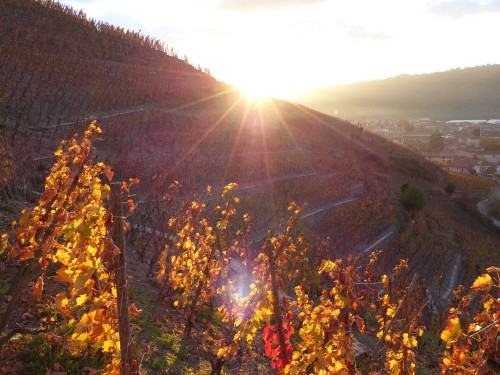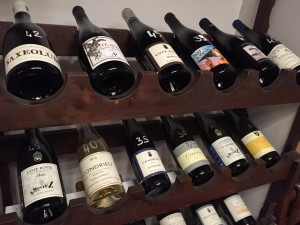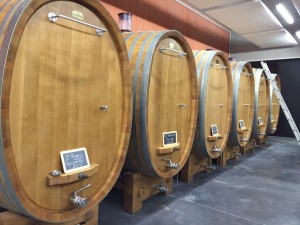
This November I got to go to one of my favorite wine regions in the world: the Northern Rhone Valley. Why is it a favorite? Because I love Syrah! I had never visited the Rhone Valley at all before and found the North to be absolutely magical — dramatic-looking terraced vineyards, delicious food, friendly people and unbelievable wines that were easily accessible. At home, wines from top producers of Cote Rotie, Saint-Joseph, Condrieu and Hermitage are either hard to find or very expensive. In the Rhone Valley, it was easy to order a glass or a bottle of the best Cote Roties at local restaurants and wine bars without spending a fortune. The winemakers were surprisingly accessible too. These famous people I had admired for years were happy to have us drop by for a chat and share their wines.
I had the privilege of barrel tasting at Ogier, Gangloff, Villard and Cuilleron, so I learned how some of the most highly-respected winemakers in the area are aging their wines. I previously had thought Rhone Valley producers in general used a lot of larger barrels (puncheons, etc.) and not a lot of new oak. But I found out that’s more of a Southern Rhone Valley thing (a lot of 400L and 600L barrels down there). Winemakers I encountered in the Northern Rhone Valley are using more 228L and 225L barrels and often a high percentage of new oak, particularly on their better wines made from older vines.
These were some things I observed at my tastings:
- White wines (Viognier, Marsanne, Roussanne) were often aged in oval foudres and older 225/228L barrels. Winemakers said they like the foudres because they keep the fruit fresh and prevent the wine from getting too rich.
- In Condrieu (Viognier), a small percentage of new oak was sometimes used (5%-20%), and one winemaker preferred 300L barrels.
- On young-vine reds (10 to 20-year old), very little new oak was used, and sometimes none.
- On older-vine reds (40-year old or more), anywhere from 50 to 100% new oak was used.
- Both reds and whites had portions aged in oak tanks (up to 50 hectoliters).
- Barrel toast levels were usually Medium or M+ on both whites and reds.
- Some wineries used water-bent barrels on the whites but always fire-bent barrels on reds.
- Red wines were aged in barrels for 18 to 24 months.
- Grain types ranged from medium-tight to tight and extra-tight grain.
 Admittedly, this was just a small sampling of producers, but many of whom are greatly admired by winemakers and aficionados around the world. I felt it was a good learning experience, and I got insight on how to treat these prestigious Rhone grape varieties and turn them into beautiful wines. Of course, having access to some of the world’s best vineyards helps!
Admittedly, this was just a small sampling of producers, but many of whom are greatly admired by winemakers and aficionados around the world. I felt it was a good learning experience, and I got insight on how to treat these prestigious Rhone grape varieties and turn them into beautiful wines. Of course, having access to some of the world’s best vineyards helps!


Hey Deborah,
Nice opportunity in Northern Rhône! I spent a brief time there last year but not to the extent to talk with winemakers about barrel routine. I can’t wait to share some of my Rhône style wines with you.
Cheers!
Scott